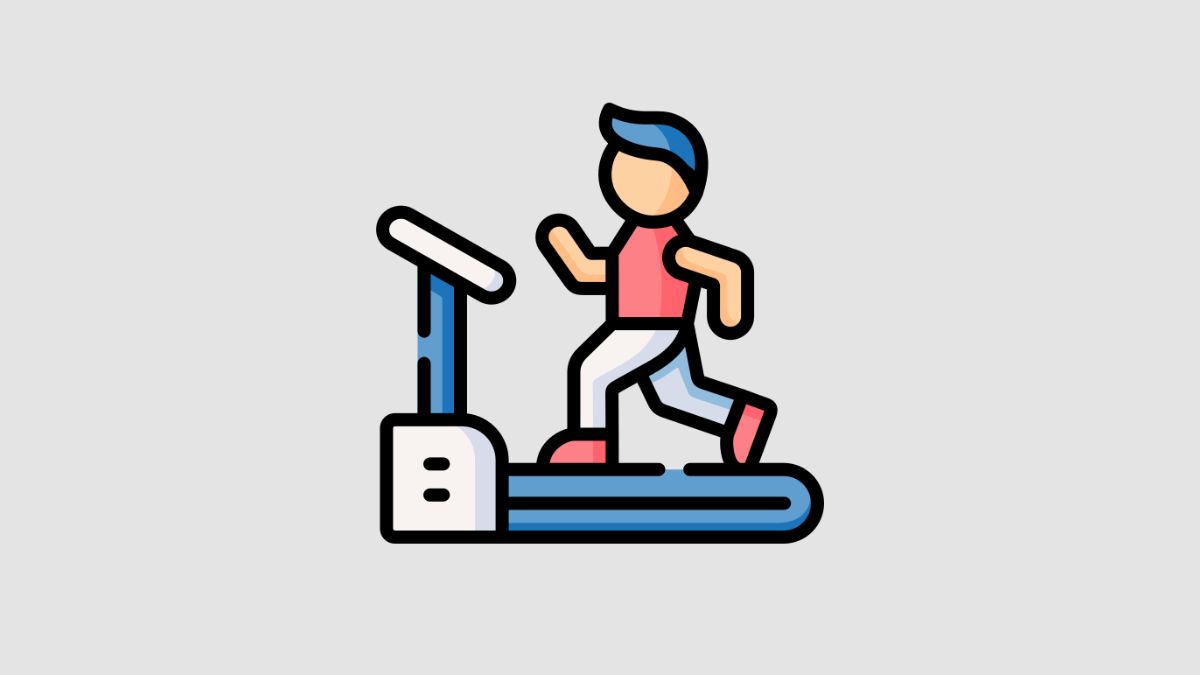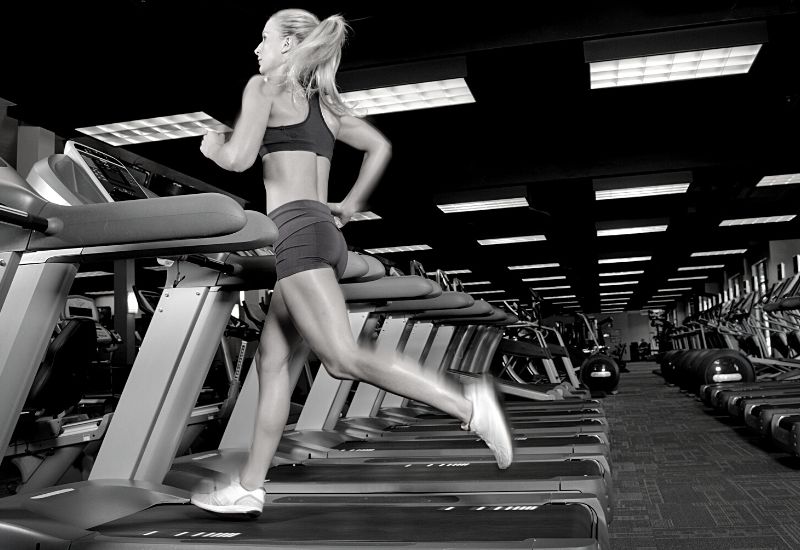Wondering how many calories you are burning on the treadmill? Read on to find out how many you are burning and some proven tips for maximizing calorie burn on the treadmill.

The treadmill is the king when it comes to functional cardio workouts.
Not only that, it is a killer way to burn a metric ton of calories.
To prove to you that the treadmill is easily one of the best fat-burning, fitness-improving cardio machines around, I’m going to take some time in this post to look at exactly how many calories you can burn on the treadmill doing a variety of workouts.
Plus, I’ll offer some tips on how to burn more calories on the treadmill and give you some great workouts that burn the most calories possible.
By the end of this post, I’ve no doubt you’ll agree that the treadmill is very likely the best cardio machine for burning calories and getting fit in a functional way every day.
So let’s dive in and get counting and torching those calories…

Calories Burned on the Treadmill Machine
One of the key benefits of treadmill training is that it helps you to walk, jog, run, and sprint better in real life. That means when you train outdoors, you can train longer, go faster, and push harder.
Always a win in my books!
But today, we’re going to focus specifically on the calorie-burning aspect. \
After all, most of us do treadmill workouts to lose weight as well as get fit, which means we’re trying to count calories to see just how much energy we can expend and how much fat we can burn during our training session.
So, after doing some research, I ran across this resource created by Harvard Medical School1 that lists how many calories you can burn in just 30 minutes of a variety of exercises.
According to this resource:
- A 125-pound person can burn 107 calories in 30 minutes of walking at 3.5 MPH
- A 155-pound person can burn 133 calories in 30 minutes of walking at 3.5 MPH
- A 185-pound person can burn 159 calories in 30 minutes of walking at 3.5 MPH
Okay, so compared to other forms of training, that’s not exactly huge calorie output. Then again, walking is pretty much the lowest-effort form of exercise, so it’s no surprise that you’re not going to torch calories at an insane pace.
What happens if we speed things up a bit? Maybe instead of walking, you jog on the treadmill. How many calories can you burn then?
- A 125-pound person can burn 180 calories in 30 minutes of jogging (around 4.5 MPH)
- A 155-pound person can burn 216 calories in 30 minutes of jogging (around 4.5 MPH)
- A 185-pound person can burn 252 calories in 30 minutes of jogging (around 4.5 MPH)
There we go! Now we’re starting to see real results.
Let’s speed things up a bit even more, shift to a slower running pace—let’s say, a 12-minute mile, or 5 MPH.
- A 125-pound person can burn 240 calories in 30 minutes of running at 5 MPH
- A 155-pound person can burn 288 calories in 30 minutes of running at 5 MPH
- A 185-pound person can burn 336 calories in 30 minutes of running at 5 MPH
Ahh, it’s pretty clear, then: the faster you run, the harder your body works, and the more calories you burn.
So if you pick up the pace to a 10-minute mile, or 6 MPH, by injecting some treadmill sprint workouts into the mix:
- A 125-pound person can burn 295 calories in 30 minutes of running at 6 MPH
- A 155-pound person can burn 360 calories in 30 minutes of running at 6 MPH
- A 185-pound person can burn 420 calories in 30 minutes of running at 6 MPH

And what happens if you get really crazy and pick up the pace to a full-on sprint? That’s when you can see some serious calorie-burning:
- A 125-pound person can burn 453 calories in 30 minutes of sprinting at 10 MPH
- A 155-pound person can burn 562 calories in 30 minutes of sprinting at 10 MPH
- A 185-pound person can burn 671 calories in 30 minutes of sprinting at 10 MPH
Real talk: no one is capable of sustaining a sprint for a full 30 minutes.
Sprinting (at any speed above 8 MPH) is an “anaerobic exercise”, meaning it burns glucose-based calories and ATP energy from your muscles without being able to tap into fat stores because it’s unable to absorb enough oxygen into your bloodstream.
A sprint pace is only sustainable for 30 to 120 seconds MAX. After that, your muscles are going to run out of energy, and you’re probably going to pass out from over-exertion.
So, suffice it to say, there’s really no way that you could ever burn that full 453 to 671 calories because you can’t sprint for a full 30 minutes.
However, as you’ll see below, mixing some sprinting into your running workouts is a game-changer to help you burn more calories on the treadmill!
How to Burn More Calories on the Treadmill
If you want to know how to run properly on a treadmill machine to burn the MAXIMUM amount of calories possible, I’ve come up with a few suggestions that will help you take your treadmill workouts to the next level.
⭐ #1: HIIT It
Remember how I was talking about mixing some sprinting into your running workouts in order to burn more calories? Well, that’s exactly what HIIT is all about!
HIIT means “high intensity interval training.” It’s a form of training where you mix periods of high-intensity exercise (sprinting) with periods of low-intensity exercise (running, jogging, or walking) in order to give your body a chance to recover.
Because sprinting is anaerobic exercise, it’s only sustainable for a short period of time before your muscles run out of energy, lactic acid builds up and causes muscle cramps, and you pass out from lack of oxygen.
Fun fact: HIIT training is a proven way to get the same cardiovascular and calorie-burning effects of longer, steady-state aerobic exercise in a fraction of the time1.
So the periods of high-intensity exercise will only last between 20 and 120 seconds. Really, it’ll be more like 20 to 60 seconds—it takes a very fit athlete to sustain maximum intensity for more than a minute.
Once you finish that high-intensity exercise interval, you slow down your pace until you’re back in the “aerobic exercise” range where your body can absorb oxygen and burn fat for the energy your muscles need to contract as you run.
Depending on the type of interval training or your physical condition, the length of the rest period will vary.
For example:
- With the Tabata Method, your intervals are 20 seconds of high intensity exercise, followed by 10 seconds of low intensity recovery. However, you only perform 8 cycles of these intervals (for a total of 4 minutes of work) before you take a break (2-3 minutes) to recover. Over the course of your workout, you’ll do multiple cycles, with rest between.
- Beginner HIITers will usually spend more time resting than training. The high intensity intervals will also be shorter—typically 30 seconds—with the recovery low intensity periods spanning anywhere from 60 to 120 seconds.
- Intermediate HIITers will often shorten their recovery period in order to push their bodies harder with less rest between sets. So, for example, if you sprint for 30 seconds, you’ll only rest for 30 to 60 seconds, rather than 60 to 120 seconds.
- Advanced HIITers will not only lengthen their high intensity time (up to 60 seconds), but also shorten their recovery time (down to 30 seconds, though sometimes an equivalent 60 seconds). The longer high intensity time demands more of the body, and pushes calorie-burning to the max.
However you do it, you’ll find you can typically only sustain about 20 to 25 minutes of these intervals before you’ve burned through your calorie supply and your workout is done.
But if you’re looking to shorten your training time and get your workouts done faster, these intervals can be game-changing!
⭐ #2: Add Incline
I’d say that most of us know exactly how much harder it is to climb a hill than walk on flat ground. And, the steeper the hill, the harder the climb—which, of course, means the more energy (calories) are expended in the effort.
One of the best ways to burn more calories on the treadmill without altering your pace is just to add incline.
Fun Fact: Using incline is the fastest way to crank up the difficulty and calorie burning. According to the American College of Sports Medicine1, simply adding an incline increases calorie burn by 60% when walking on a treadmill.
You can keep walking, jogging, or running at the same speed, but raising the incline forces your body to work significantly harder to tackle the ascent.
Plus, saddling up to the best incline treadmill for you increases the focus on your hamstrings and glutes, which makes your legs stronger overall.
If you are looking for a treadmill for your home gym, a manual treadmill is the best type of treadmill machine as it starts on an incline (it has to–with no motor, it requires your horsepower and a slight incline to move the belt).
See also: Manual vs. Motorized Treadmills: Which is Best for Your Goals?
⭐ #3: Take it for a Power Walk
Walking on the treadmill gets a little ‘tude from the more hardcore fitness enthusiasts at the gym, but there is a ton of value in doing longer “power” walks on the treadmill for burning tons of calories.
For example, I’ll try walking roughly 1-2 hours in a workout to build that endurance for long-distance hiking and trekking. But instead of walking at my usual pace (3.6 MPH), I’ll try speeding it up (to 4 MPH or even 4.3 MPH) until it feels like a “power walk.”
You can also pair this with incline and even use a weighted vest as you progress with your fitness.
Power walks are awesome as they are almost impact-free, which means you can do them for longer, resulting in more and more calorie burning.

What Workouts Burn the Most Calories on the Treadmill?
The workouts that burn the most calories on the treadmill will always be workouts that push you to move faster.
- Sprint training takes the top of the list. Whether you’re training for distance (100m, 200m, 500m, etc.) or time (30 to 60 seconds of sustained effort), sprinting will always burn the most number of calories. Shortening your recovery periods (to 30 to 120 seconds, depending on your fitness level) turns it into a highly effective HIIT training session you can blast through in 20 to 25 minutes and be DONE for the day!
- Running workouts are also great for calorie-burning. The average “jog” speed is around 4.5 MPH, whereas a run will be usually 5 to 6 MPH. But if you can keep pushing your running speed higher, you’ll steadily increase the calories you burn.
There are plenty of other machines in the gym where you can burn a lot of calories, but on the treadmill, these are your best options!
The Bottom Line
The treadmill is the most functional of all the cardio machines, and it has the potential to help you burn a lot of calories.
By being smart in how you use it you can push your fitness to a new level and see real results for the time you invest in training!
In other words, bye-bye calories!
More Articles and Guides Like This
How Many Calories Do You Burn on an Elliptical? (and How to Burn More). Wondering how many calories the elliptical trainer burns? Here’s how much calorie burning you are doing, how the elliptical compares to other machines in the gym, and tips for how to burn even more calories on an elliptical.